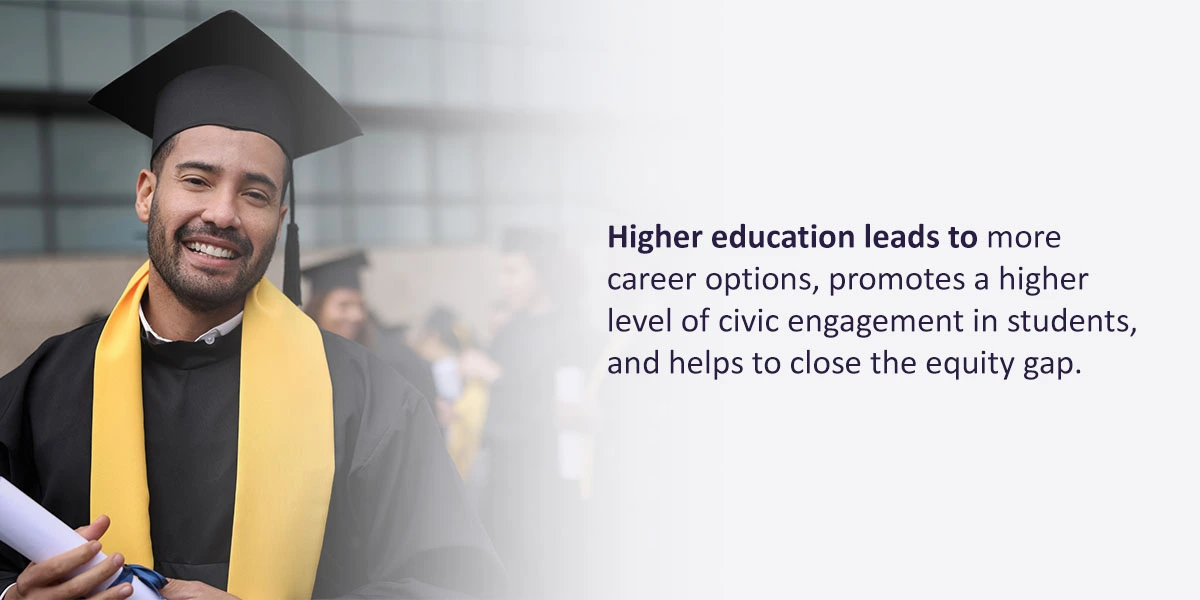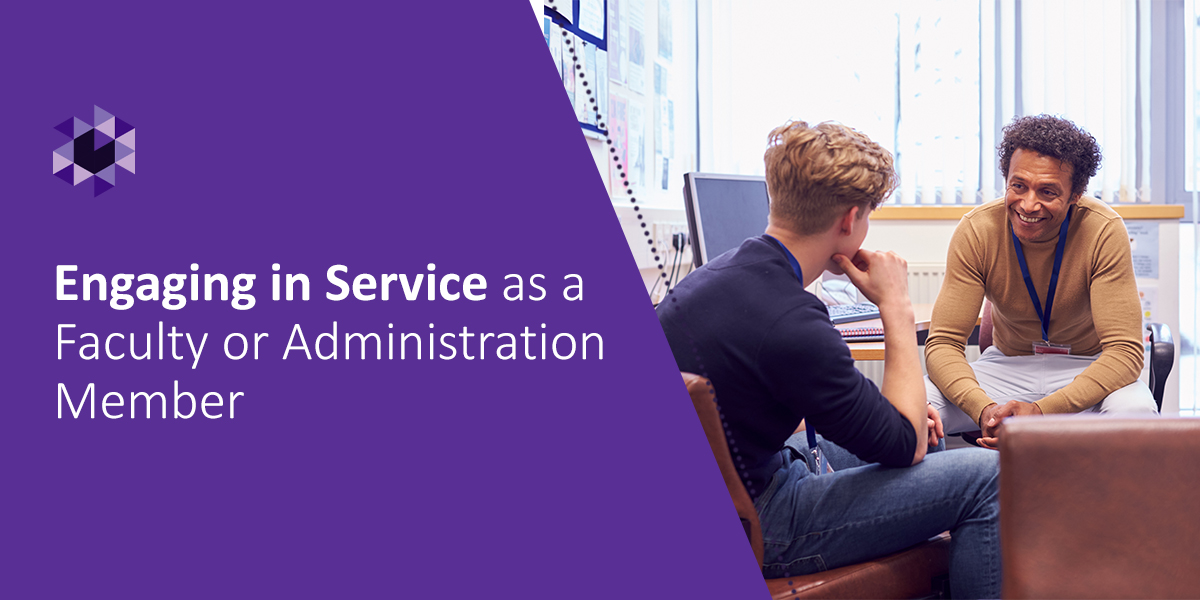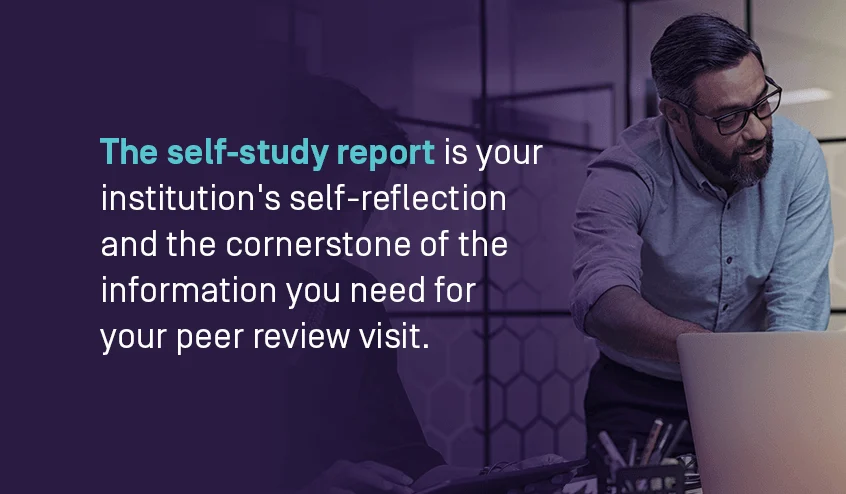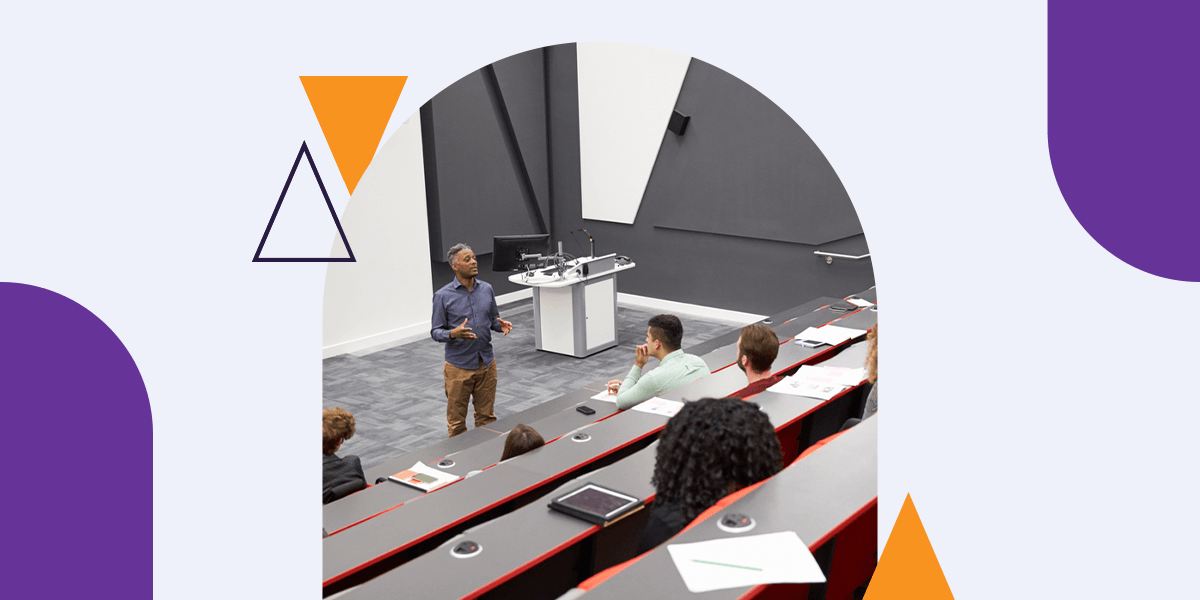
Diversity, equity, and inclusion (DEI) initiatives help higher education institutions ensure all staff and students have equal opportunities and receive fair treatment. The goal is to create welcoming environments where everyone feels like they belong. However, the new administration is implementing laws to ban DEI initiatives, which will affect all educational institutions.
As more states approve anti-DEI legislation, your institution will likely have to make changes to its DEI policies. These changes may cause unrest in both faculty and students and require empathic, respectful conversations. Learn more about the implications of recent changes and how to have conversations with faculty and students in this guide.
Understanding the history behind DEI in higher education
DEI initiatives have been around in education for many years in an effort to diversify the student body. Historically, specific groups of students have had less access and more barriers to success in higher education. These include ethnic minority, first-generation, and low-income students.
Institutions began introducing DEI initiatives — made up of policies and programs — to improve diversity, equity, and inclusion in higher education and beyond. Doing so helps historically unrepresented students excel, which positively impacts all. For example, diversity on campus introduces varying perspectives and ideas, improving empathy, creativity, and critical thinking.
DEI initiatives focus on three main concepts:
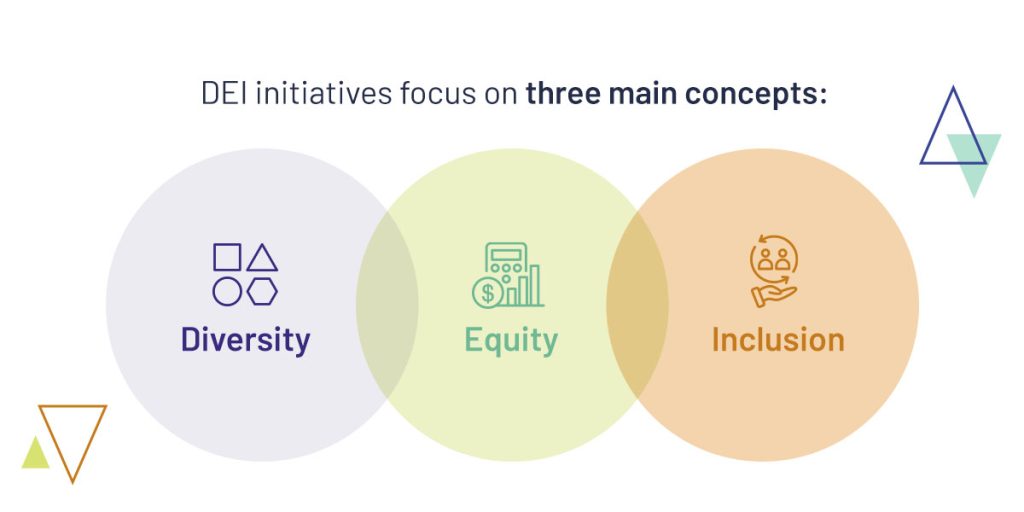
- Diversity: Diversity refers to people with different races, ethnicities, genders, ages, sexual orientations, religions, socioeconomic statuses, disabilities, and more. Institutions consider diversity when recruiting students, hiring faculty, and selecting leaders. They also work to promote appreciation and understanding of each other’s differences in campus discourse.
- Equity: Equity promotes the fair treatment of all but recognizes that some people need extra support and resources to reach an equal outcome. In higher education, equity focuses on making resources accessible for all students, reducing barriers to participation, and compensating faculty equally.
- Inclusion: Inclusion involves creating a culture that embraces people’s differences and empowers everyone to participate and contribute. Higher education institutions improve inclusion by making learning environments accessible, giving a voice to underrepresented groups, and fostering a respectful, welcoming campus culture.
Legislative decisions surrounding the dismantling of DEI
On January 20, 2025, the White House issued an executive order called “Ending Radical And Wasteful Government DEI Programs And Preferencing,” which calls for the discontinuation of DEI initiatives in federal government agencies. On January 23, 2025, the US Department of Education (DoE) released a statement detailing how they’ve taken action to eliminate DEI initiatives. Some of these actions include:
- Removing hundreds of DEI documents from their outward-facing communication channels.
- Scrubbing mentions of DEI from their website.
- Canceling all DEI training and service contracts.
On February 15, 2025, the DoE released another statement calling for all educational institutions that receive federal funds to stop using racial preferences and stereotypes as a factor in decision-making. This applies to decisions regarding admissions, hiring, promotions, scholarships, and more.
As of March 2025, 29 states have introduced 126 bills against DEI initiatives.
Higher education institution responses to DEI bans
The current administration’s push for the removal of DEI has caused changes in higher education institutions nationwide. They’re responding by closing DEI offices and reducing DEI-related staff positions. For example, Florida State University has eliminated its Equity, Diversity, and Inclusion Office and changed three roles in its human resources department related to DEI.
Higher education institutions are also removing or rewording any mention of DEI from their websites and statements. Other impacts include:
- Pausing faculty diversity training programs.
- Changing DEI education content.
- Canceling DEI-related events.
- Eliminating diversity committees.
- Cutting funding for identity-related scholarships.
Many are redirecting their initiatives toward supporting students from protected classes, such as low-income students or students with disabilities.
How can DEI rollbacks impact faculty and students?
Changes to your institution’s DEI policies, however small, can have far-reaching effects on campus climate. With news of DEI dismantling spreading, students and faculty may already feel anxious. Understanding the potential impact can prepare you for conversations with faculty and students. Each institution’s response to DEI dismantling differs, but any adjustments will affect faculty and students in various ways.
Faculty
DEI dismantling can cause faculty to have:
- Increased workloads: Many higher education institutions still believe in the concept of DEI but will have to scale back. Faculty may have to pick up the tasks DEI staff used to do to continue addressing student needs, increasing their workload.
- Higher tension: Faculty who believe in DEI initiatives may feel frustrated about their dismantling, increasing tension and causing conflict with decision-makers.
- Declining mental health: Increased worry, tension, and stress from the DEI dismantling may start to negatively affect faculty mental health. Coupled with increased workloads, poor mental health can lead to burnout and faculty taking more sick days or resigning.
Students
Students may also see the effects of DEI dismantling in the form of:
- Limited support: Many DEI initiatives involve scholarships for students from underrepresented groups. As institutions roll back on DEI and receive less funding, they may have to cut back on these scholarships and other resources, leaving students with less support.
- Feelings of disconnect: Without DEI programs, some students may feel less valued and welcome on campus. They may also see fewer people like themselves in classes and with faculty. These factors can lead to students feeling disconnected and like they don’t belong.
- Fewer opportunities: DEI initiatives often focus on giving opportunities to underrepresented groups in the form of networking events and career readiness workshops. As institutions move away from DEI, these students may have fewer career opportunities and feel less prepared to enter the workforce.
Tips for navigating conversations with faculty and students
Having conversations about politics and hard choices can be challenging, especially when emotions are high. To have more empathetic and constructive discussions with faculty and students about DEI rollbacks, your institution can:
1. Involve leadership
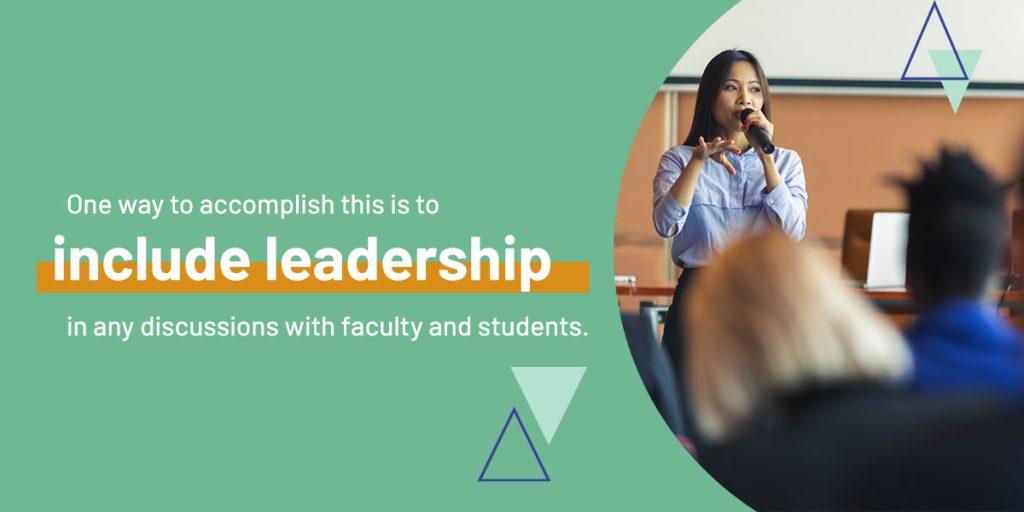
In the face of uncertainty and huge changes, it’s important to start conversations on the right foot. One way to accomplish this is to include leadership in any discussions with faculty and students. Leadership is most likely responsible for making decisions regarding DEI initiatives, and their presence shows their commitment to addressing any concerns people may have.
Having leadership present also ensures that information shared in discussions is accurate and consistent, avoiding confusion. They can also directly address feedback and provide extra clarity. Additionally, faculty and students can interact with the people involved in DEI changes, making them feel valued and heard.
2. Establish expectations
Before starting any conversation, it’s also important to establish your institution’s expectations. You can start by sharing the goal of the conversation, such as sharing specific information or gathering feedback. Outlining the meeting goals gives participants a clear direction for the conversation and outcomes so they can stay on track.
It’s also beneficial to outline ground rules at the start. If you want to keep conversations respectful and to the point, you could implement rules such as using a respectful tone, giving others a chance to speak, and sticking to the topic. You may also want to establish rules to keep information confidential. If anyone breaks the rules during the conversation, you can address it immediately and reiterate the rule’s importance.
3. Provide context
Everyone might not understand what’s happening regarding DEI in your institution and the country. To get all parties on the same page, start by offering some context. Explaining the context of a situation helps everyone understand it similarly, reducing the chance of confusion and conflict.
Give a summary of the exact laws that led to the decisions made at your institution. Make it easy to understand and provide extra clarity if someone asks for it. You should also address any misunderstandings or inaccurate information, as these can hinder discussions.
4. Reaffirm institutional values
Many institutions have made DEI a part of their mission and core values. In the face of DEI bans, they’re making terminology changes that appease DEI bans without decreasing support for underrepresented students. For example, Clemson University in South Carolina renamed their Office of Inclusion and Equity to the Division of Community, Engagement, Belonging, and Access.
While it’s unclear what exactly new legislation will require, reaffirming institutional values will help guide decision-making and discussions. It will also highlight your institution’s dedication to its mission and quell fears.
5. Foster open dialogue
Conversations with faculty and students about DEI bans will help your institution gather honest opinions and feedback. However, people will only share their thoughts if they feel safe. They also want to know that offering their opinion will make a difference. To get the best feedback, you must create safe spaces where people feel comfortable opening up.
Start by making sessions more relaxed and informal. Have the person leading the conversation model openness by sharing their thoughts and perspectives. Then, keep discussions respectful and free of judgment. Validate any worries faculty or students bring up and show empathy for their experience. Additionally, reiterate the value of feedback to your institution and explain how you will use it.
6. Use active listening
Having good communication skills can help you connect with others during DEI conversations and get them to open up. They’ll feel valued and heard, resulting in more positive interactions. One effective communication technique is active listening, where you listen to what people say and the meaning and intent behind it. It also involves being fully present in the conversation and controlling your emotional response.
To get better at active listening, try:
- Being fully present in the conversation and maintaining eye contact.
- Noticing the person’s nonverbal cues, like their gestures and facial expressions.
- Listening to understand and asking more open-ended questions.
- Repeating what you hear and asking for clarification.
- Being patient and letting people speak without interrupting them.
- Remaining neutral and refraining from passing judgment.
7. Provide support
Students and faculty — particularly those from underrepresented groups — may feel that they’ll receive less support now that the new administration has banned DEI. As your institution adjusts to comply with new legislation, these feelings may ramp up. You can show students your institution’s dedication to support by ramping up support services during this disorienting time.
Consider making counseling services available online or available for longer hours. You can also encourage mentors to check in with mentees more frequently. Students may also need extra assistance from academic advisors while making decisions about their program as courses and curricula shift. During conversations about DEI, remind people about these services and encourage them to reach out.
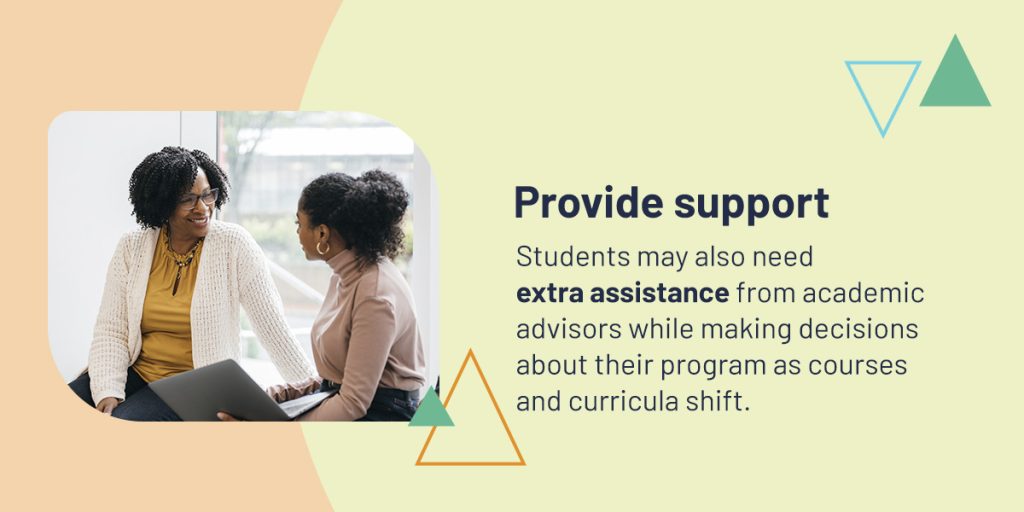
8. Encourage collaboration
Your institution may have to make changes to DEI initiatives in the future, and it could be challenging to maintain an inclusive culture. To address issues more effectively, consider working with faculty and students. During conversations, encourage participants to brainstorm alternative strategies for supporting DEI. They may offer ideas and solutions that directly address their needs.
9. Remain transparent
As you implement changes and navigate conversations with faculty and students, it’s vital to remain as transparent as possible. Transparency will help you build trust between decision-makers and the campus community. It also shows that you value faculty and student input, making them feel more involved. These feelings can boost morale and establish a more positive campus climate as your institution alters policies and courses.
10. Monitor changes
The work doesn’t stop after meetings with students and faculty are complete. If you’ve collected feedback from them, you need to close the feedback loop by making adjustments based on their suggestions and letting them know. As the new administration releases additional rules, this strategy will help you gather more in-depth feedback from faculty and students as they can see that it makes a difference.
It’s also beneficial to continually collect data — such as faculty and student opinions, enrollment rates, and diversity statistics — to assess the impact of the DEI rollbacks. Tracking metrics and regularly evaluating progress can give your institution a deeper understanding, allowing you to make more informed decisions.
Support faculty and students through DEI dismantling with Watermark

Every higher education institution has reacted differently to the DEI bans, making it hard to predict how changes to DEI initiatives will impact your institution. Watermark offers a suite of tools specifically designed for higher education to make data collection and analysis simpler. Using Watermark’s Educational Impact Suite (EIS), you can track the impact of institutional changes on student engagement, satisfaction, and retention, as well as faculty workload and morale.
During this time of uncertainty, students and faculty will also need more support than ever. EIS includes software solutions — including Watermark Student Success & Engagement — for supporting all students from prospect to graduation. You can also use Watermark Faculty Success to reduce faculty workload as they take on additional tasks and support their development throughout their career.
Talk to an expert today to see our software in action and find a solution that works best for your institution.



































































